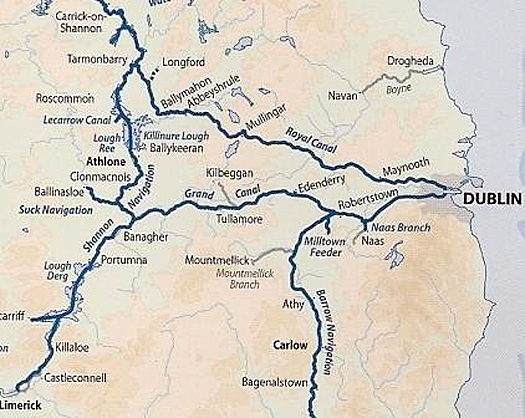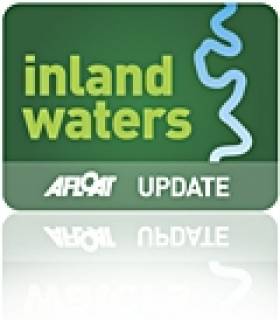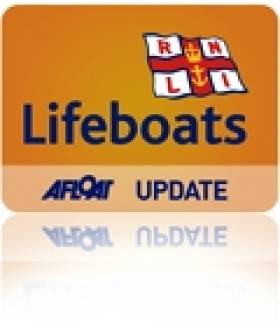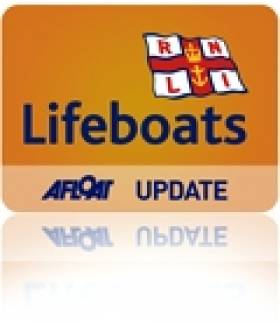Displaying items by tag: Lifeboats Ireland
Sailors Plan Month Long Journey from Shannon to Liffey and Back
Nenagh resident and inland waterways enthusiast, Nick Theato, single-handed aboard 'Bo-Bo, a five metre Pedro trailer/sailer and Pat Kelly, Killadangan, with his son Andrew in 'Shu-Ra-Nu', a 6 metre Etap 20 trailer/sailer, plan to raise funds for Lifeboats Ireland by undertaking the IWAI Green & Silver Challenge in June, 2011. Their fundraising target is €5,000.00.
On the 25th June, 1946, Tom and Angela Rolt left Athlone aboard 'Le Coq', a 28ft.x8ft. converted ship's lifeboat on a voyage that would inspire contemporary and successive generations of inland waterways enthusiasts.
Tom Rolt wonderfully documented the voyage in his book 'Green & Silver', published in 1949, which has since become a classic. This work was instrumental in inspiring the small group who founded the Inland Waterways Association of Ireland in 1954, whose objective was to save the Shannon navigation from strangulation by low bridges. Indeed, the colour scheme of the IWAI's logo and burgee derive from the cover design of Rolt's book.
With the re-opening of the Royal Canal in October 2010, it is now possible to retrace Rolt's journey in full and complete the circular route formed by the Royal Canal, River Liffey, Grand Canal, River Shannon and Camlin River.
To celebrate this event, the IWAI has initiated the 'Green & Silver Challenge' in an effort to encourage people to make the circular journey. Nenagh resident, Nick Theato single-handed aboard 'Bo-Bo, a 16 foot Pedro trailer/sailer and Pat Kelly, Killadangan, with his son Andrew aboard 'Shu-Ra-Nu', a 20 foot Etap trailer/sailer, plan to raise funds for Lifeboats Ireland by travelling the full Green & Silver Route throughout June 2011.
Departing on June 1st, they will travel from Dromineer through Lough Derg and Lough Ree and enter the Royal Canal at Richmond Harbour. They plan to cross the Liffey in Dublin 17 days later, where they will take a welcome day off before commencing the return journey via the Grand Canal to Shannon Harbour. The journey will take approximately 28 days, will cover a minimum of 333 km. and navigate through 92 locks (some double), 91 of which are manual. Their fundraising target is €5,000

Nick Theato is Treasurer of the Lough Derg RNLI Fundraising Branch and Lough Derg Lifeboat Station at Dromineer.
Pat Kelly is Secretary of the Lough Derg RNLI Fundraising Branch.
Nick and Pat welcome all sponsorship, however modest. Contributions can be pledged online at http://www.mycharity.ie/event/green_silver_event/. Nick may be contacted on 086 1738014 ([email protected]). Pat is at 087 6908099 ([email protected]).
For further details / interviews / photos: Contact Pat Kelly at 087 6908099 ([email protected]). Support photography: Gerardine Wisdom 087 6522582 ([email protected]).
Cold Swimmer Rescued in Portrush Harbour
After swimming across the harbour to the moored boat the teenager called for help. Belfast Coastguard co-ordinated the rescue and sent the Portrush ILB Lifeboat and the Coleraine Coastguard Rescue team to the scene.
The Portrush lifeboat took the teenager from the boat to the pontoon where he received first aid from the Coastguard Rescue team before being transferred to hospital by ambulance.
Belfast Coastguard Watch Manager Alan Pritchard said:
"It may be summer but the sea is chilly and the cold can seriously affect swimmers.
"If you are going to take a dip please know you're limits and remember cold water shock can be dangerous, even if you're young and fit and think you're able."
Related Safety posts
RNLI Lifeboats in Ireland
Safety News
Rescue News from RNLI Lifeboats in Ireland
Coast Guard News from Ireland
Water Safety News from Ireland
Marine Casualty Investigation Board News
Marine Warnings
Donaghadee RNLI Crew Members to Receive Awards
Seven lifeboat Crew Members from Donaghadee RNLI lifeboat station are to be recognised by the Royal National Lifeboat Institution for their part in an early morning rescue that took place in horrendous weather conditions and resulted in three lives being saved. The callout happened just after 2am on the morning of 13 September 2009, when the yacht Bentim Buoys with three crew onboard was on passage from the Isle of Man to Bangor and ran aground.
Coxswain Philip McNamara is to be accorded the Thanks of the Institution on Vellum while Deputy Second Coxswain John Ashwood, Mechanic Shane McNamara, Crew Members Stephen McComiskey, David McCormack, Richard McGimpsey, and John Petrie will each receive a Vellum Service Certificate. The Vellum award from the RNLI is for services that show great skill and expertise by the lifeboat crew, often carried out in very difficult condition.
The service lasted just under four hours but in that time the lifeboat crew had to deal with deteriorating weather conditions, which were battering the lifeboat and the grounded vessel. They also had to plan and put into practice several attempts to bring the crew and the vessel to the safety of Donaghadee harbour when the worsening seas prevented the standard rescue procedures.
At 2.15 am on the morning of 13 September 2009 the lifeboat crew’s pagers were activated to go to the aid of a 10 metre yacht which had run aground on Craig Brain Rocks. En route to the scene the lifeboat met with poor weather conditions. Once exposed to open water the wind was force 5 with the swell reaching 2 metres and worsening. As the lifeboat crew approached the yacht they could see it was in imminent danger of breaking up.
Lifeboat Coxswain Philip McNamara used great skill in manoeuvring the lifeboat in difficult seas. Two lifeboat crew launched a small craft from the lifeboat, which allows close access to the shore. From that Richard McGimpsey and David McCormack attempted to board the vessel but they were swept out into the sea and had to return to the lifeboat using paddles. The crew on the casualty vessel were unable to leave their yacht and so the decision was taken by the Coxswain to attempt to establish a tow and drag the yacht off the rocks, hoping that the vessel would float.
Several attempts were made to establish a line from the lifeboat to the yacht, which were severely hampered by the weather. Finally at 3.30am a line was established and secured onto the yacht. The vessel started to come upright but the line parted. Lifeboat Mechanic Shane McNamara had prepared a second towline and finally at 3.39am the yacht came upright, moved along the rocks and refloated. However the tow then parted and the yacht was cast adrift and in great danger of grounding a second time.
The lifeboat crew reacted immediately and recovered the towline. The Coxswain once again manoeuvred the lifeboat close to the yacht and the tow was re-established. The yacht and her three shaken crew were then taken back to Donaghadee with no serious injuries.
Commenting on the service RNLI Divisional Inspector for Ireland Martyn Smith said, ‘These vellums are well deserved for what was an extraordinary service, resulting in three lives being saved. Split second decisions were made by the Coxswain in horrendous conditions. The lifeboat crew were operating in an area where local knowledge was vital and they used this to great effect. The Coxswain also had to manoeuvre the lifeboat very carefully, as the lifeboat crew attempted to bring the yacht and her crew to safety.
‘This all happened in the middle of the night and under very challenging conditions. With the lifeboat rolling in heavy seas various scenarios and options were worked out by the crew, which ultimately ensured the safe recovery of the three men and their yacht. I want to pay tribute to the lifeboat crew lead by Coxswain Philip McNamara for this incredible service.”
The presentation of the awards to the lifeboat crew will be made later in the year.































































